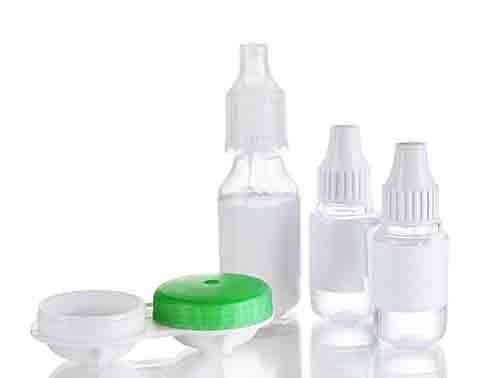Hydroxypropylcellulose is an ether of cellulose in which some of the hydroxyl groups have been hydroxypropylated with propylene oxide. Complete substitution would provide a DS of 3 but because each substituted hydroxypropyl group contains a hydroxyl group, these can also be etherified. When this occurs, the number of moles of hydroxypropyl groups per glucose ring (MS), can be higher than 3.
Because cellulose is very crystalline, hydroxypropylcellulose must have a DS about 4 for good water solubility. In water, hydroxypropyl cellulose forms liquid crystals with many mesophases depending on concentration. These mesophases include isotropic, anisotropic, nematic and cholesteric, the latter resulting in many colors such as violet, green and red.
Pharmaceutical applications include treatments for medical conditions such as dry eye syndrome (keratoconjunctivitis sicca), recurrent corneal erosions, decreased corneal sensitivity, exposure and neuroparalytic keratitis. It is also used as a binder in tablets.
Hydroxypropylcellulose is also used as a thickener, a binder and emulsion stabiliser in foods with E number E463. HPC is used as a support matrix for DNA separations by capillary and microchip electrophoresis.



 Hydroxypropyl cellulose-Av MW 370k CAS 9004-64-2
Hydroxypropyl cellulose-Av MW 370k CAS 9004-64-2